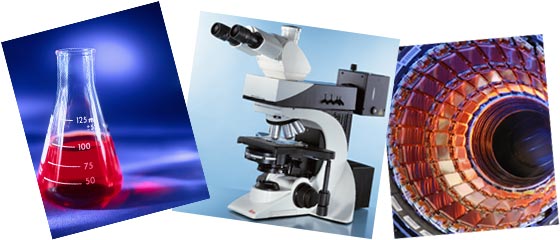 ![[Header]](../XuShared2/Line3.jpeg)

Add a Comment (Go Up to OJB's Blog Page) VoyagerEntry 601, on 2007-09-04 at 22:30:41 (Rating 1, Science) Earlier this year was the 30th anniversary of the launch of one of the most successful and significant projects in the history of space exploration. Voyager I was launched on 5 September 1977 and has been travelling ever since to the boundary of the solar system and beyond. There are actually two spacecraft: Voyager II was launched first but travelled on a slower flight path. Voyager I is now about 16 billion kilometers from Earth and is the most distant artificial object and, according to Wikipedia, is actually more distant than any known natural Solar System object as well.
Even though its been travelling for 30 years and is beyond the edge of the Solar System it is still a tiny fraction of the distance to the nearest star. For measuring large distances we use light measurements. For example, one light year is the distance light travels in one year - that is about 10 trillion kilometers. For smaller distances we can use light seconds (about 300,000 kilometers), light minutes, light hours, etc. Voyager is 14 light hours away but the nearest star is 4 light years and the nearest large galaxy over 2 million light years. Obviously a big leap in technology is required before journeys like those portrayed in science fiction are possible!
But Voyager is still a brilliant achievement. Originally the project was to perform a grand tour of the Solar System, making use of a rare planet alignment at the time. Despite the opportunity this created the budget was cut and the project had to be downgraded to an exploration of Jupiter and Saturn. Those were the primary objectives, but the spacecraft had the capability to do more. Voyager II continued on to explore Uranus and Neptune but Voyager I used a gravity assist at Saturn to accelerate out of the plane of the Solar System.
The nuclear fuel source should be good for more than 10 years more so the spacecraft might be able to produce results for many years yet. The transmitters have only 30 watts of power but the incredibly sensitive dish receivers on Earth can still receive that data - at about 1 kbit/s! Voyager provided the first really detailed photos of the giant planets and their moons, and it showed that automated spacecraft could be incredibly flexible and useful tools. They are a great achievement but I hardly heard a thing about them outside the scientific media I monitor. That is unfortunate, because space exploration really needs a boost to its popular perception now.
 Comment 1 (825) by Frank on 2007-09-04 at 22:54:57:
I totally agree. Some of the early space missions were awesome! The Viking and Pioneer missions were also very successful. 
You can leave comments about this entry using this form. To add a comment: enter a name and email (both optional), type the number shown above, enter a comment, then click Add.
Note that you can leave the name blank if you want to remain anonymous.
Enter your email address to receive notifications of replies and updates to this entry.
The comment should appear immediately because the authorisation system is currently inactive.
![[Comments]](../XuShared/Comment1B.jpeg) ![[Preview]](../XuShared/Comment6B.jpeg) ![[Blog]](../XuShared/Up2B.jpeg)
|

![[Comments]](../XuShared/Comment1B.jpeg)
![[Preview]](../XuShared/Comment6B.jpeg)
![[Blog]](../XuShared/Up2B.jpeg)